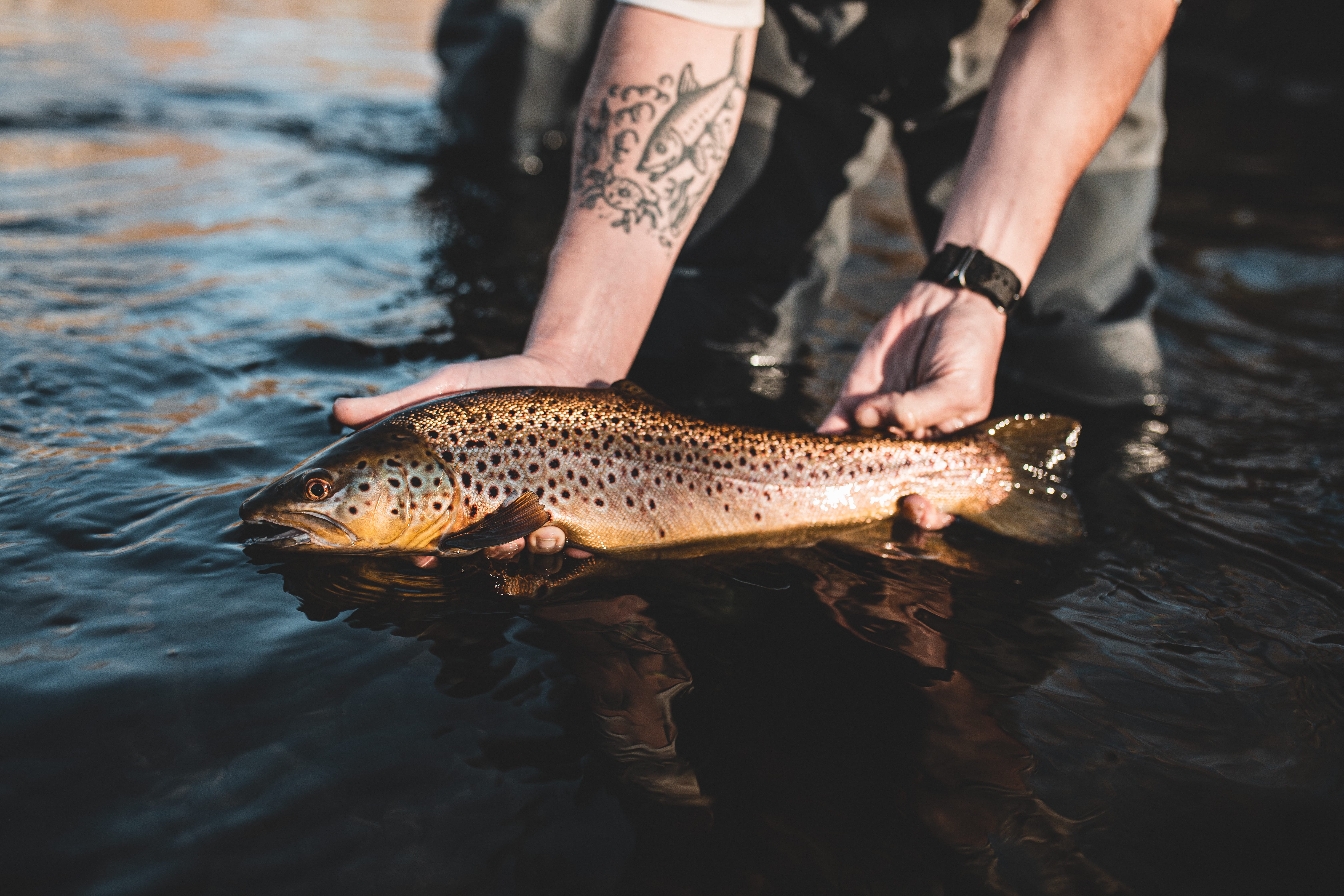Here’s how my family tells the story…
I think the things that fueled the Trout Unlimited story started happening long before the organization was founded in 1959.
A long, winding road led to TU’s founding
Prior to 1884, Michigan—which is still essentially a giant sponge resting in the middle of the Great Lakes—was an entirely different world, fish-wise, than it is today.
When French explorer Pere Jaques Marquette ventured throughout the region in the mid-1600s, the native trout in Lake Michigan were lake trout. In the creeks and rivers, the fish were grayling and brook trout.
As Michigan was settled and populated, overfishing, pollution and loss of habitat pressured the grayling and brook trout to the brink of extirpation.
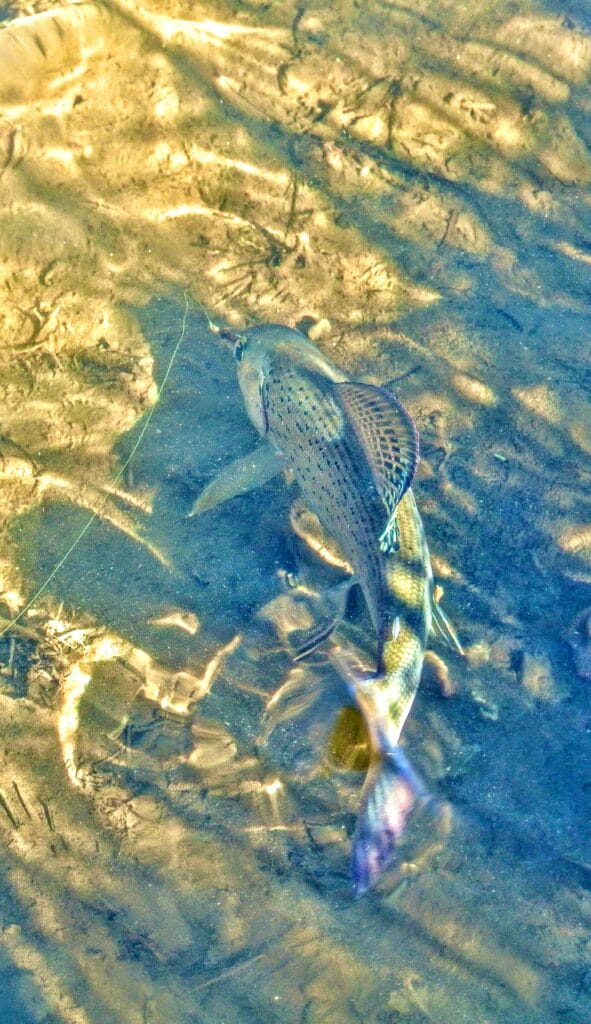
In 1883, someone, perhaps Michigan Governor Josiah Williams Bogale (though that remains unconfirmed) made a trade with Baron Von Behr of Rhineland, Germany, swapping fertilized whitefish eggs from Michigan for fertilized eggs of a hardier trout—the brown trout—from Germany.
And in 1884, those brown trout eggs that had arrived in North America began hatching. The original plan was to transport those hatchlings to the Upper Peninsula of Michigan by rail. However, it became clear during the hot journey that the fish might not make it all that way.
Under normal circumstances, the thought might have been to pour those fingerlings into one of the larger mainstem rivers in Michigan’s Lower Peninsula, like the Muskegon or the Pere Marquette. However, at that time, those rivers were largely choked with floating timber being sent toward Lake Michigan to be shipped to Chicago to help rebuild that city after the Great Chicago Fire of 1871.
And thus, those brown trout were ultimately poured from a railroad trestle into a smaller feeder creek—the Baldwin River, which is effectively the north branch of the Pere Marquette. There are diverging accounts as to whether it was just the Baldwin, or also other smaller streams including the White and the Little Manistee, or others, but consensus has it that the first brown trout planted in American waters happened in the Baldwin in 1884.
What we know, for sure, is that those brown trout proliferated.
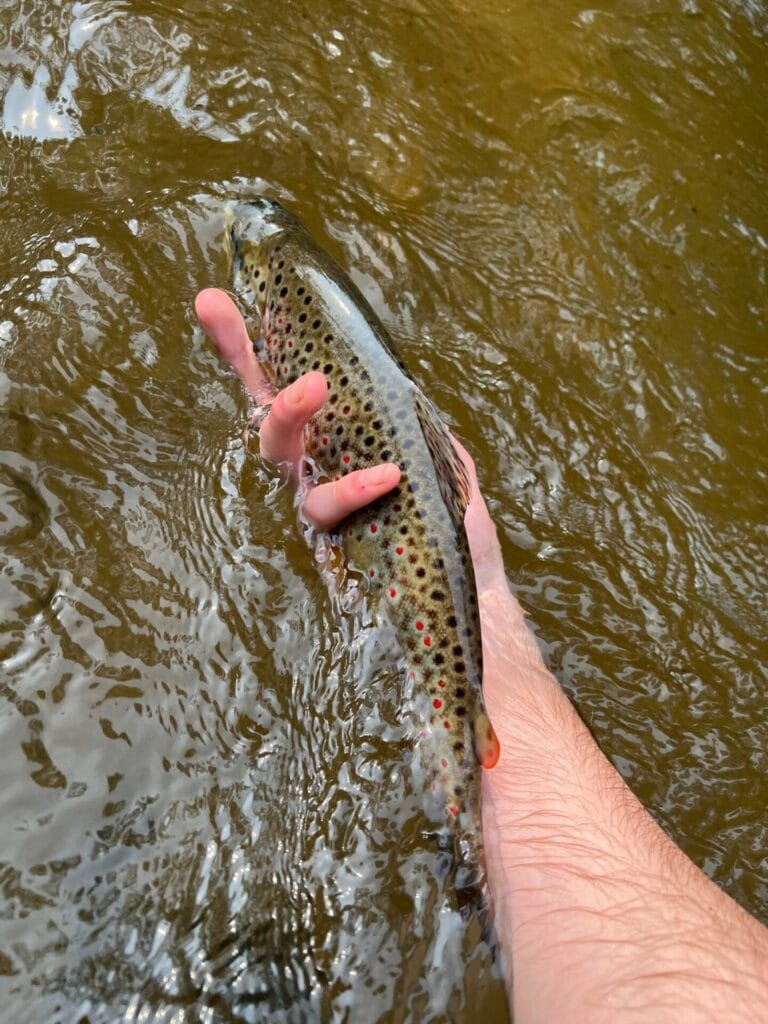
Family history on the Baldwin
My wife’s family took to trout fishing in 1925 when her great-great grandfather Paul F. Steketee and friends/family bought a bit of land and built cabins on the banks of that Baldwin River in Michigan, within walking distance of that railroad trestle.
Flash forward 30-some years later, when a women’s silk-stocking salesman walked into Steketee’s department store in Grand Rapids, not only to sell some product, but also to pitch great uncle Harold Steketee on a concept that revolved around keeping the trout fishing more self-sustaining.
That salesman was George Griffith, who would become an original founder of TU, creator of the “Griffith’s Gnat” fly pattern, author of For the Love of Trout, and more.
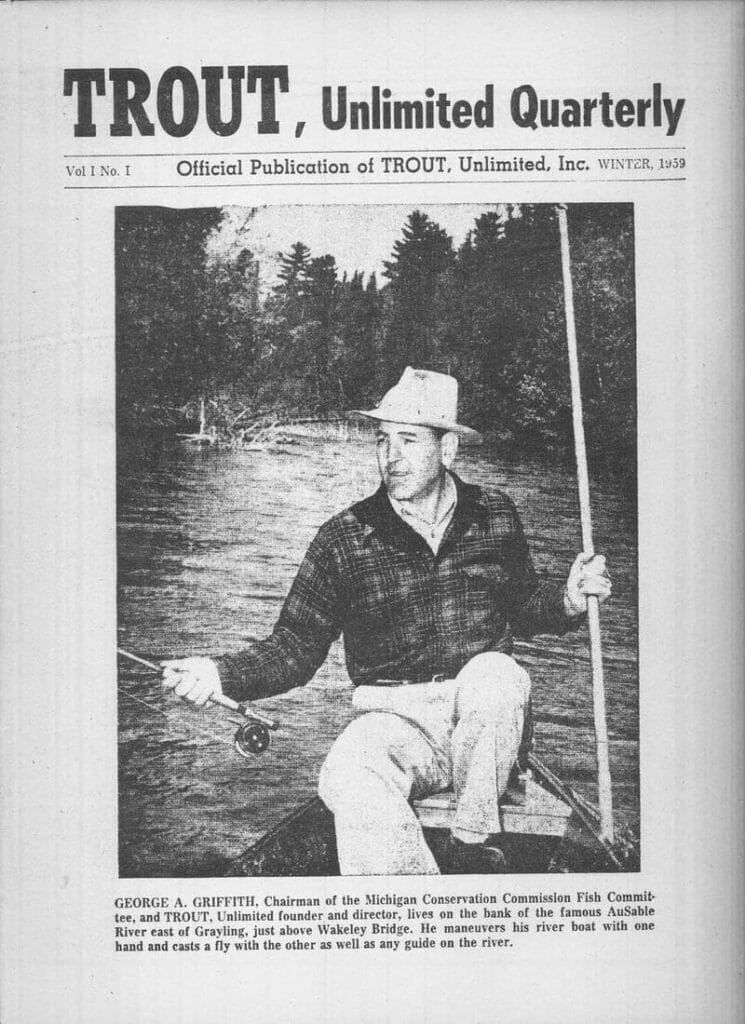
You see, by that time, fishing in Michigan had become largely a “put and take” endeavor. The state would put hatchery fish in the rivers; the angling public would catch them and that was that.
Griffith, his friend Art Neumann, and others who frequented the “Holy Waters” section of the AuSable River near Grayling in northern, lower peninsula Michigan, landed on a not-so-radical notion that, if you took care of the habitat and took care of the rivers themselves, the fish and the fishing might just be self-sustaining.
As Art Neumann put it: “Take care of the fish, and the fishing will take care of itself.”
Take care of the rivers, and big trout would make little trout, maybe even unlimited numbers of them. So many, in fact, that there would be no need to grow trout in hatcheries, dump them in rivers, see them all caught and repeat that process again, year after year.
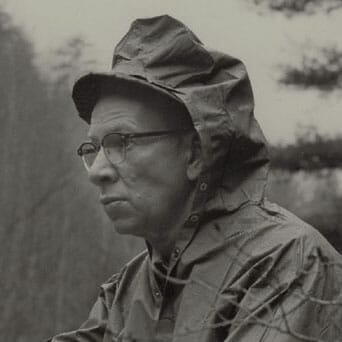
Oddly enough, anglers from throughout the state, including Uncle Harold, took notice and figured that would be a pretty good idea. For the record, this was at a time WAY before catch-and-release was considered mainstream (though Lee Wulff had professed the ideal as far back as the 1930s). At that time, caught fish ended up in a creel, so keeping rivers full of fish was a stiff challenge.
TU started with river champions and continues to this day
Undaunted, from the banks of the AuSable, these anglers created an organization to foster this ideal. They called it Trout Unlimited, which was officially founded in 1959.
Fishing tackle manufacturers like Scientific Anglers in Midland, Michigan, Orvis in Vermont, and others soon poured in their support, and over the subsequent years TU spread its reach from coast to coast.
The founders of Trout Unlimited were the original “champions” of rivers. Not in the context of the fish they caught, but rather for their foresight and what they ultimately gave to us.
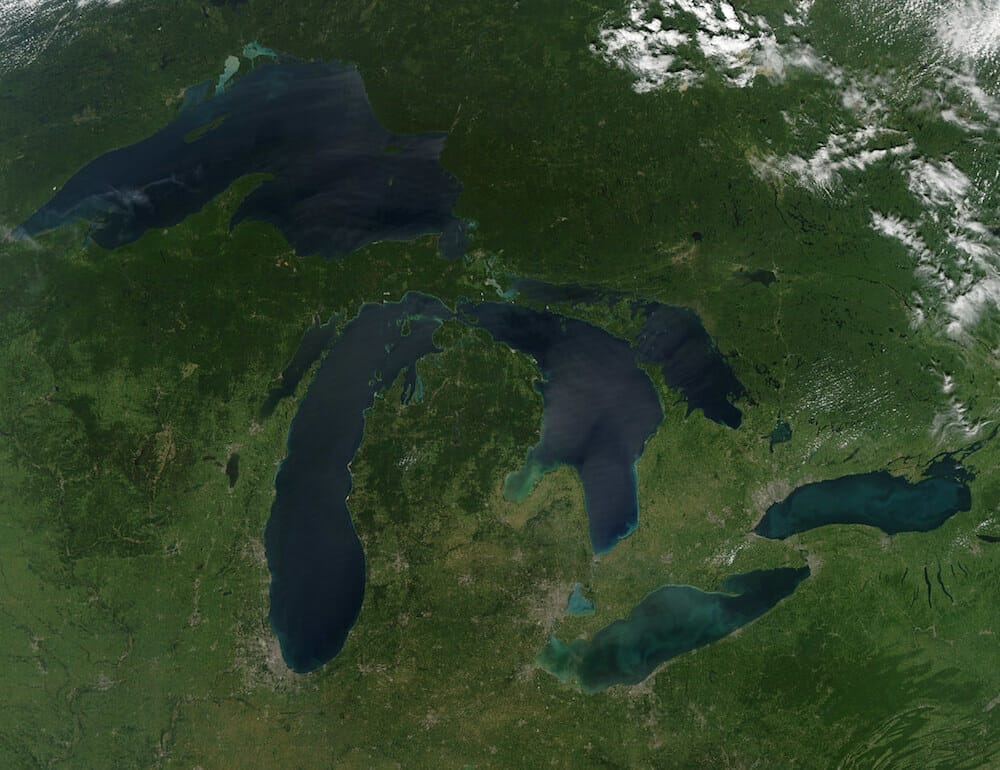
I can only imagine the pride they might feel, realizing the immense reach TU has today, from protecting native trout in the Rockies or Carolinas, to the vast runs of salmon and steelhead in Alaska, and so much more.
It now remains up to us to honor their legacy and pay it forward.



